Making His Story Their Story: Teaching Hamilton at a Minority-serving Institution

In the summer of 2016, optimistic about a full-time teaching position at a minority-serving institution, yet unsure about what the U.S. election would mean for immigrants’ rights, I played the Hamilton soundtrack daily. Lin Manuel Miranda wrote the Pulitzer-prize winning musical inspired by Ron Chernow’s biography on the United States’ founding father because, he believed, Alexander Hamilton’s life embodied hip hop. My repeated listenings urged me to assign the musical as homework in my courses.
Colleagues with whom I engage on Twitter provided resources with which to begin. A public historian, Lyra Monteiro, wrote an important review for Public History,“Race-Conscious Casting and the Erasure of the Black Past in Lin-Manuel Miranda’s Hamilton,” which provide one key angle of critique. Latinx Theater scholar and SO! writer Trevor Boffone created an online syllabus, #Syllabus4Ham, that provided important critiques of the musical, news coverage of its growing popularity, and initial scholarly analyses of the cultural historical significance of the musical’s popularity. Pedagogically, Miranda’s archival research in addition to his belief that Hamilton’s life embodied hip hop sparked an interest to bring the production to my gender and interdisciplinary studies classrooms. While colleagues works’ inspired ways to discuss the musical in class, post-election coverage and the release of the Hamilton Mixtape provided more material to discuss. Teaching children of hip hop whose lives embody the struggle that Miranda made the central force behind his re-writing of Hamilton’s contribution to United States’ history, I wanted to develop lessons drawing on those relations.
By the spring 2017, I had done preliminary reading on the syllabus Boffone provided and replaced the musical with the Mixtape as my car ride soundtrack. When organizing my syllabus, I assigned tracks from the mixtape against the musical’s soundtrack with the intent of assigning students excerpts in both both my introductory Gender Studies course and Interdisciplinary Research Methods courses, but with a unique twist for each class. Gender Studies engaged with the content contextualized by discussions of immigration and citizenship. I assigned my Research Methods course Monteiro’s critique of race-consciousness of the musical against the mixtape and the musical. While students were in solidarity with Montiero’s argument, I invited them to consider Miranda’s original intent, the mixtape, which may have informed the themes Miranda prioritized.
Few of them had heard of the musical before my class and less had heard of the mixtape. Their limited exposure necessitated historicizing both Miranda’s career and the evolution Hamilton’s, which begins with 2009 Miranda’s White House performance. Miranda, invited by President Obama to perform a song from his previous hit In the Heights, instead decided to introduce his new project, a mixtape based on Alexander Hamilton.
Through discussion, I proposed that the students consider that the production, in 2009 envisioned as an album, served as a strategic catalyst to bring attention to his forthcoming mixtape. That attention evolved into encouraging Miranda to produce the musical; it would take a few more years till the intended mixtape was produced. Even though produced later, I speculated that the mixtape thematically benefited from the popularity of the musical because the musical’s focus on Alexander Hamilton rewrites the context of the mixtape.
Teaching Hamilton the musical and the mixtape felt politically necessary at a minority serving institution in this historical moment of anti-immigrant, and anti-black sentiment. Having, in the past, worked with other youth to mobilize youth empowerment through hip hop, Hamilton provided an avenue in which I could discuss its political potential because of its popularity not only in spite of it. In breaking down Miranda’s cultural and political significance, I summarized the evolution of awards he and the musical’s cast had won as well as the preliminary cast’s reflections on participating in Hamilton, along with what it means to have the success of the musical produce a wider audience for the mixtape.
After more than a semester working with students who grow frustrated with the traditional research paper and because of my own work producing research-based fiction and poetry, teaching the musical and mixtape provided an important example of research-based art. Because some students approach interdisciplinary research methods not understanding the possibilities of the relationship between art and research and some students are unsure of how to connect learning outcomes to their aspiring performance careers, I find teaching Miranda’s work remains necessary. Further, Miranda provides an avenue through which I could relate to students because of our shared interest in music as well as our conflicted relationship with consuming hip hop.
Teaching a student population that is 25% Latinx and who are either directly or indirectly affected by immigration policies, my students related, often quite deeply and intimately, to the message of the song. I watched their faces as they listened, particularly to “Immigrants (We Get the Job Done),” and their kinesthetic responses showcased what many of us ache for our students to experience: wonder, appreciation, and the illumination of insight.
I then guided them to hone in specifically on Puerto Rican rapper Residente rapping about the Mexican immigrant struggle in Spanish, emphasizing how he sonically and rhetorically urges a Latin pan-ethnicity while using his U.S. citizenship privilege to historicize border crossing Mexicans. Residente’s lyrics create an opportunity to discuss Puerto Ricans’ cultural reality of being perceived as immigrants while being legally defined as citizens, all the while calling back to the lyrical connection to the “Battle of Yorktown” from the musical.
I highlighted Miranda’s rhetorical strategy in building a song around one line that contexts changes across either song. The “Battle of Yorktown” centers on the contributions of immigrants to gaining freedom. During the lecture, I drew connections between the lyric that would become a song and the lyric subtly referencing the lack of freedoms for black people who were enslaved in the U.S. I asked about the parallels before explaining them, using the intentionality behind creating and compelling a racially diverse cast to script a narrative about who could and who had built the United States. What does it mean to hear these voices emanating from this cast, telling this story?
Pedagogically, teaching music in either course served the intent of reimagining the purpose and potential of sound, whether from a musical or a mixtape, as a site of critical thinking. Popular musicians’ cultural authority slowly decenters the white fragility I have come to expect from difficult conversations such as the ones Hamilton and The Hamilton Mixtape allow me to have. Furthermore, the call-and-response between the mixtape and the musical work address the silence of the unrecognized, exploited, and/or enslaved labor that continues to build this country. For my students, hearing musicians they like or who perform in their favorite genre, speaking truth to power about poverty, struggle, and not being thought of as good enough shifted not only our classroom energy, but many students’ perspectives.
Teaching the Hamiltons helped my student population make sense of their “invisible” status in the U.S. and want more than what’s expected. They gained something in being able to hear their stories in the classroom—not just read them on the page—but hear them from people who look and sound like them. Hungry for more material that speaks to their disenfranchisement, my students wondered why more songs that sound the complex beauty of our resilience and struggle are not on the radio. They wanted to know how they can ask for more.
—
Featured Image: Screen capture from “Immigrants (We Get the Job Done)” remix video
—
Erika Gisela Abad, Ph.D, is a Queer Latina poet, born and raised in Chicago. She received her PhD in American Studies in 2012. Since completing her degree, she has worked as: a customer service associate and a scheduler at a phone interpreter call center, head counselor for a caddy program affiliated with a high school scholarship fund, field director for an education policy campaign, an oral historian and ethnographer. Since August 2016, she has been a full time assistant professor teaching gender studies. Twitter: @lionwanderer531; @prof_eabad
—
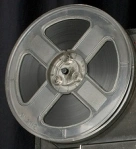 REWIND!…If you liked this post, you may also dig:
REWIND!…If you liked this post, you may also dig:
“Don’t Be Self-Conchas”: Listening to Mexican Styled Phonetics in Popular Culture*–Sara V. Hinojos and Dolores Inés Casillas
“Ich kann nicht”: Hearing Racialized Language in Josh Inocéncio’s Purple Eyes (Ojos Violetas)–Trevor Boffone
Moonlight’s Orchestral Manoeuvers: A duet by Shakira Holt and Christopher Chien
The Sounds of Anti-Anti-Essentialism: Listening to Black Consciousness in the Classroom- Carter Mathes
Toward A Civically Engaged Sound Studies, or ReSounding Binghamton

 I want to enable my students to mobilize sound studies not just as an analytic filter to help them understand the world, but as a method enabling more meaningful engagement with it. This post, an abbreviated version of the paper I recently gave at the Invisible Places, Sounding Cities Conference in Viseu, Portugal on July 18, 2014, explores my pedagogical efforts to move my sound studies work from theory to methodology to praxis in the classroom and in my larger community. In particular, I am working to intervene in the production of social difference via listening and the process by which differential listening practices create fractured and/or parallel experiences of allegedly shared urban spaces.
I want to enable my students to mobilize sound studies not just as an analytic filter to help them understand the world, but as a method enabling more meaningful engagement with it. This post, an abbreviated version of the paper I recently gave at the Invisible Places, Sounding Cities Conference in Viseu, Portugal on July 18, 2014, explores my pedagogical efforts to move my sound studies work from theory to methodology to praxis in the classroom and in my larger community. In particular, I am working to intervene in the production of social difference via listening and the process by which differential listening practices create fractured and/or parallel experiences of allegedly shared urban spaces.

Click for flyer, designed by Peter Liu
Inspired by ongoing efforts such as ReBold Binghamton–the visual arts group alluded to by my assignment’s title– Blueprint Binghamton, and the Binghamton Neighborhood Project, I wanted to articulate sound studies methods with long-term community engagement interventions. I decided to task the upper-level undergraduate students in my Spring 2014 “How We Listen” course with designing community engagement projects that identified and addressed an issue in Binghamton, the de-industrialized town in upstate New York housing our university. My students’ proposals ranged from rain-activated sound art, to historical sound walks that layered archival sounds with current perceptions, and a “noise month” sound-collection and remix project designed to challenge entrenched attitudes. They then presented the projects via a public poster session open to faculty members, administrators, community representatives, and peers.
Working with local residents and using asset-based theories of civic engagement, the students’ projects sought to re-sound Binghamton, enhancing existing forms of communication, amplifying hidden sounds and histories, and creating new sounds to resound throughout Binghamton’s future. While the students initially set out to “fix” Binghamton—bringing year-round residents into the world as their largely 18-21 selves heard it—the majority opened their ears to alternative understandings that left them questioning the exclusivity of their own listening practices. Students realized that while they may have been inhabiting Binghamton for the past few years, they hadn’t been perceptually living in the same town as year-round residents, and, conversely, that the locals’ tendencies to hear students as privileged nuisances had historical and structural roots.
The historical, theoretical, and methodological groundwork that scholars of sound have laid in recent decades toward heightened social and political understandings of sound—fantastic in volume, quality, AND reach—have equipped sound studies scholars with powerful critical tools with which to build a more directly, civically engaged sound studies, one as much interested in intervention and prevention as continued reclamation and recovery. Scholar-artists such as Linda O’Keeffe have begun to fuse audio artistic praxis with the more social science-oriented field of urban studies. O’Keeffe’s community project, highlighted in “(Sound)Walking Through Smithfield Square in Dublin,” set out to solve an audio- spatial problem at the very heart of the city: why did the city’s efforts to “rehabilitate” the landmark Smithfield Square—which had been a public market for hundreds of years—bring about its demise as a thriving public space rather than its rejuvenation? Equipping local students with recorders, O’Keeffe documented the students’ understanding of the space as “silent,” even though it was far from absent of sound. She noted local teenagers felt repelled by the newly wide-open square; the reverberation of their sounds as they grouped together to chat made them feel uncomfortable and surveilled—so it remained an isolating space of egress rather than a gathering place.

The Smithfield square in 2009, Image by Linda O’Keeffe
Importantly, O’Keeffe’s conclusion moved beyond self-awareness to political praxis; she presented her students’ self-documentation to Dublin city planners, intervening in Smithfield’s projected future and attempting to prevent similar destruction of other thriving city soundscapes unaligned with middle-class sensory orientations. O’Keeffe’s work sparked me to think of listening’s potential as advocacy and agency, as well as the increasing importance of reaching beyond the identification of diverse listening habits toward teaching people to understand the partiality and specificity of their sonic experience in combination with the impact listening—and the power dynamics it is enmeshed in—has on the lives, moods, and experiences of themselves and others. Listening habits, assumptions, and interpretations do not just shape individual thoughts and feelings, but also one’s spatial experience and sense of belonging to (or exclusion from) larger communities, both actual and imagined. Learning to understand one’s auditory experience and communicate it in relation to other people enables new forms of civic engagement that challenge oppression at the micro-level of the senses and seeks equitable experiences of shared space to counter the isolating exclusion compelled by many urban soundscapes.

Corner of Front and Main Street, Binghamton, NY, Image by Flickr User Don Barrett
O’Keeffe’s project also made me rethink how space-sound is shaped through social issues such as class inequity, particularly in my community of Binghamton, a small town of approximately 54,000 currently facing profound economic challenges. The end of the Cold War devastated Binghamton’s economy—then primarily based in defense—and the economic downturn of the early-1990s provided a knock-out punch, severely impacting the region in ways it has yet to recover from: the behemoth local IBM relocated to North Carolina, manufacturing jobs permanently decreased by 64%, and the population shrank almost by half. Recent climate-change induced disasters have also left their mark; massive floods in 2005 and 2011—on a geographic footprint historically flooding only 200-500 years—displaced thousands of low-income residents, destroyed many businesses, and collectively caused close to 2 billion dollars in damage. The global recession of 2008 left over 30% of Binghamton’s residents below the poverty line, including 40% of all children under 18.

Library Tower, Binghamton University, Image by Flickr User johnwilliamsphd
The campus, 12,000 undergraduate students strong, often seems remote from the city I just described. Only 6% of BU students are drawn from its surrouding Broome County. The vast majority (60%) of BU’s students hail from the New York City metro area, a site of racialized economic tension with the rest of the state, evidenced by campaigns such as “Unshackle Upstate.” Indeed, Binghamton’s student body is more racially diverse than Binghamton the city (Vestal, where the university is located, is 88% white), and even though the relatively low-cost public university–approximately eight thousand dollars a year for in-state tuition– serves many first-generation college students, students with generous financial aid packages, and students employed while matriculating, the city’s poverty amplifies even slight class privilege.
These long-term structural fissures have led to tensions between the university students—whom some Binghamtonians problematically peg as wealthy outsiders and/or racially target—and full-time residents, dubbed “Townies” by many students and dehumanized as the backdrop to their college experience. While students and year-round residents inhabit the same physical spaces in Binghamton, they are not in fact living the same place and they often experience, interpret, and act on the same auditory information in drastically different ways. Binghamton sounds differently to each group, in terms of the impressions and interpretations of various auditory phenomena as well as the order of importance an individual gives to simultaneous sounds at any given moment.
Embodied aural perceptions shaped by class, race, age, and differing regional experience may in fact drive many of the “town and gown” conflicts—noise complaints most obviously—and exacerbate others, particularly mutually distorted perceptions that students bring Binghamton down and that residents are, as one student cruelly stated in the campus newspaper, “creatures” from “an endless horror movie.” So how to address this divide? And how to use sound studies to do it? I knew I did not want to impose a community project on my students that did not have their buy in and creative energy behind it. I decided on a group-sourcing project that asked students to work together to design a sound-studies based community project. I envisioned the assignment as the first phase of a longer-term project, with the most workable idea serving as the basis for a full-blown service learning experience in future courses. However, the assignment proved to be pedagogically valuable in its own right, not just as a prelude to future work.

“Binghamton Unites Community Through Sound” Poster Project, Image by Author
I arranged my course around the proposal assignment, providing students with the critical thinking skills to imagine a project of this type. We began with theoretical and methodological materials that would introduce them to sound studies—none of my students were familiar with the field and its assumptions—and ground their thinking in the idea that listening is a complex sociocultural, political, and critical practice. While we read and discussed multitude of pieces on listening, the students reported four scholars as especially inspirational to the project: Yvon Bonenfant’s theorization of “queer listening” as a listening out (rather than the more normative taking in), Regina Bradley’s work on race and listening in American courtrooms that focused on how white lawyers discredit witnesses speaking patois and African American Vernacular English, Maile Costa Colbert’s artistic imagining of a “wayback sound machine,” and Emily Thompson’s work on noise and time/space/place, particularly in her new interactive “Roaring Twenties” project. Student Daniel Santos reported in a survey following the project,
The relationship between sound and time was very useful to our project; we understood the concept that no city ever sounds the same after a long period of time, and we sought to take advantage of this fact. Through our residents’ stories, we learned that Binghamton was once booming with sound from numerous, lucrative industries. Walking into a factory brought an industrial cacophony: card punchers thudded as steel was pounded against steel. However, today, a walk into these factories results in an eerie silence. We wanted our soundwalk participants to realize and become affected by this lack of and difference in sound, and raise pertinent questions: what happened to these sounds? Why is there such a large difference in sound levels? Where do I place myself within this soundscape?
I worked with Binghamton’s Center for Civic Engagement—a model program founded in 2010—and in particular with Assistant Director Christie Zwahlen, to equip students with basic-but-solid knowledge that would enable a new understanding of community work. Zwahlen brought home two major principles to students: 1) service learning has a pedagogical component; it is important to a project’s success that students learn something through their work rather than merely donating time or skills, 2) Community engagement works best when based on identifying and mobilizing a community’s assets rather than implementing an external project addressing perceived deficits. These two concepts meshed especially well with the students’ evolving understanding of listening as multifaceted, political, and deeply impacted by temporal and spatial contexts, because it required the students to engage directly with community members and learn how to listen to their voices, histories, and needs.
For both civic engagement and sound studies, Zwahlen and I introduced students to the various methods used to solve problems and answer our most important questions. For civic engagement, Christie focused on the asset map, which forced students to think of the surrounding community in terms of its strengths rather than the weaknesses they could already readily list. This exercise not only flipped their perspective but also helped them imagine and hone their project by identifying community stakeholders who would be receptive to their inquiries.

ReSounding Binghamton Project, Image by author
In terms of sound studies, I introduced them to a multiplicity of methods through readings, experiential activities, and process writing, in particular sound provocations and sound walks. According to student Hannah Lundeen’s post-project survey, the sound walks she performed proved especially fruitful:
Initially, solving a community issue through sound seemed next to impossible. It wasn’t until sitting down and thinking about the sound studies methods of soundwalks that it became clear. I liked soundwalks because they are a way to engage anyone in sound studies. They are an easy concept to explain to people who may not have thought much about their soundscape previously. They are an active and fun way to engage all community members in listening well.
As Lundeen relates, interweaving these methods formed the foundation of their community projects, enabling their inquiries regarding understanding differences in listening, how to enable people to recognize and discuss aspects of their listening, and to provoke some kind of impactful social change.
The final third of the semester was devoted to working on the final project [Click these links for the Rubric for Final Poster Presentation we used to assess the projects as well as the assignment sheet with Tips for Successfully Completing this Project both of which I handed out on day one! ]. Following an initial period of research and discussion, students narrowed down their project ideas, identified and met in person with potential community partners–ReBold Binghamton, Binghamton’s Center for Technology & Innovation, the Parks Department and several City Council members were especially helpful– and put together their proposals, emphasizing their new understandings of listening and its relationship to space and place via community mobilization. Students prepared a 7-minute gloss of their projects for public presentation that
- identified an issue (supported by research)
- described how project addressed the issue
- presented community asset map as a foundation
- shared list of potential community partners
- discussed sound studies methodologies supporting the project
- estimated benchmarks for the project’s completion
- projected the project’s long-term outcomes
- prepared personal reflections on the process.

ReSounding Binghamton Student Presentation, Image by Shea Brodsky
Here is a sampling from the rich palette of student project pitches:
- Restoring the Pride: A public art initiative building rain-activated sound sculptures.
- BUCS: Binghamton Unites Community with Sound: A public group karaoke project.
- Safe and Sound: A “kiosk walk” of 10-interactive electronic sound art pieces that increase downtown destination traffic by day and operate as a “blue light” safety system by night.
- Blues on the Bridge Junior: A children’s music stage at one of Binghamton’s most popular yearly events.
- Happy Hour: A weekly campus radio show designed to combat seasonal depression.
- Listen Up!: Sound Month Binghamton: An annual themed digital “sound collection month” in March with accompanying “sounds of Binghamton” remix project. This project fosters community habituation to “Others’” sounds while also tracking long-term changes in the soundcape and in residents’ ideas of noise.
- A Sound Walk Through Binghamton: Historical soundwalks through several areas in Binghamton, where archival sounds of the past (some compiled from recordings, some performed) are placed in continuity and contrast with contemporary soundscapes.
Zwahlen and I understand that this iteration of the project does not constitute civic engagement as of yet. Certainly, the students raised more questions than solutions: how to work with—and equitably solicit contributions from—community members rather than organize classroom-first? How to increase community involvement on a campus that is a foreboding maze at best—and how to increase student traffic in the many sites not reached by Binghamton’s limited public transportation? Most importantly, How to share sound studies epistemology beyond the classroom, creating listening experiences that not only take differences into account but potentially re-script them?

ReSounding Binghamton Student Project, Image by Author
As we move forward with long-term development, we will undoubtedly encounter more questions. However, even at its earliest stages, I believe guiding my students to integrate sound studies methodologies with asset-based service learning provided them with a transformative experience concerning the powerful resonance of applied knowledge and sparked the kind of self-realization that leads to civically engaged citizens. It created meaningful connections between them and a local community suddenly made significantly larger. For my students, listening became more than a metaphor or an individualized act of attention, rather they began to understand its role as a material conduit of location, outreach, and connection. As an anonymous student shared in my teaching evaluations: “This class was different, but in a very good way. It has been so involved with the human experience, more so than with other classes.” In the middle of the so-called “humanities crisis,” this response points to the potential power of a civically engaged sound studies, a branch of the field combining research with praxis to reveal the role of listening in the building, maintenance, and daily experiences of diverse communities in the city spaces they mutually inhabit but often do not fully and equitably share.
—
Featured Image by Shea Brodsky, (L to R) Binghamton University Students Robert Lieng, Daniel Santos, and Susan Sherwood, Director of Binghamton’s Center for Technology & Innovation (CT&I)
—
Jennifer Stoever is co-founder and Editor-in-Chief of Sounding Out! She is also Associate Professor of English at Binghamton University and a recipient of the 2014 SUNY Chancellor’s Award in Teaching.
—
 REWIND!…If you liked this post, you may also dig:
REWIND!…If you liked this post, you may also dig:
Sounding Out! Podcast #13: Sounding Shakespeare in S(e)oul– Brooke Carlson
Deejaying her Listening: Learning through Life Stories of Human Rights Violations– Emmanuelle Sonntag and Bronwen Low
Audio Culture Studies: Scaffolding a Sequence of Assignments– Jentery Sayers






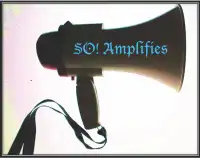
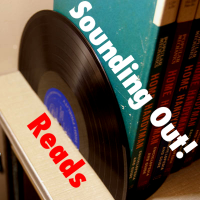





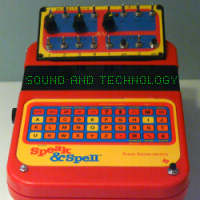


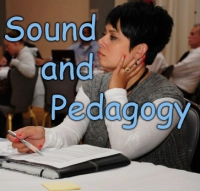

Recent Comments